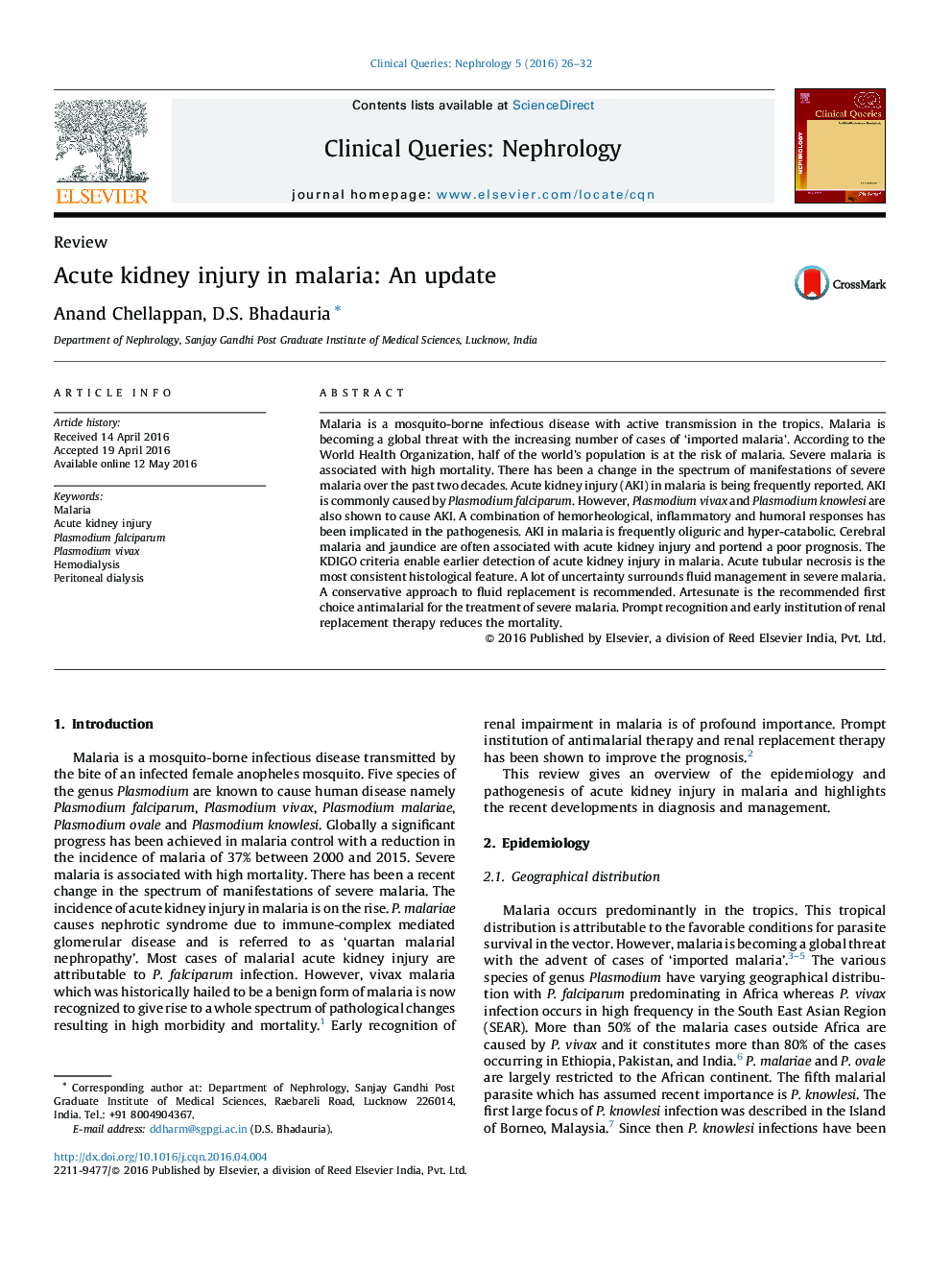| Article ID | Journal | Published Year | Pages | File Type |
|---|---|---|---|---|
| 3107911 | Clinical Queries: Nephrology | 2016 | 7 Pages |
Malaria is a mosquito-borne infectious disease with active transmission in the tropics. Malaria is becoming a global threat with the increasing number of cases of ‘imported malaria’. According to the World Health Organization, half of the world's population is at the risk of malaria. Severe malaria is associated with high mortality. There has been a change in the spectrum of manifestations of severe malaria over the past two decades. Acute kidney injury (AKI) in malaria is being frequently reported. AKI is commonly caused by Plasmodium falciparum. However, Plasmodium vivax and Plasmodium knowlesi are also shown to cause AKI. A combination of hemorheological, inflammatory and humoral responses has been implicated in the pathogenesis. AKI in malaria is frequently oliguric and hyper-catabolic. Cerebral malaria and jaundice are often associated with acute kidney injury and portend a poor prognosis. The KDIGO criteria enable earlier detection of acute kidney injury in malaria. Acute tubular necrosis is the most consistent histological feature. A lot of uncertainty surrounds fluid management in severe malaria. A conservative approach to fluid replacement is recommended. Artesunate is the recommended first choice antimalarial for the treatment of severe malaria. Prompt recognition and early institution of renal replacement therapy reduces the mortality.
